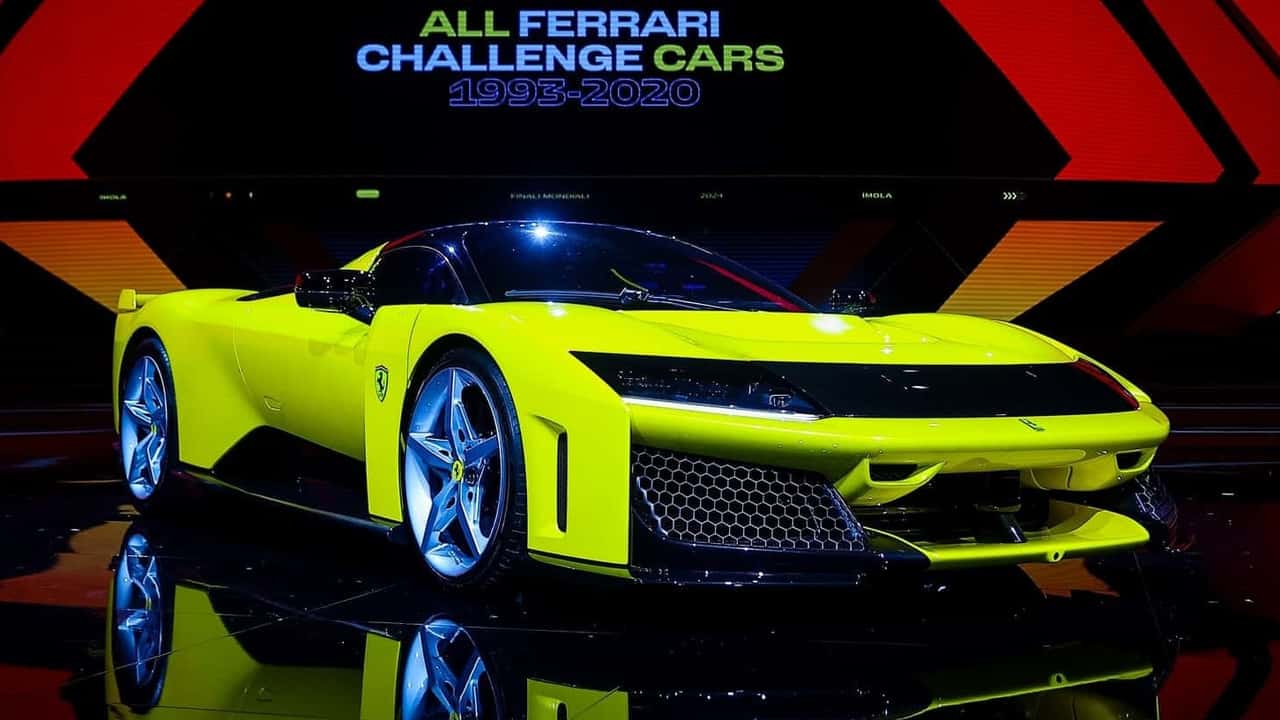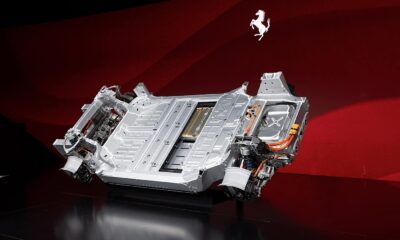Technology
Ferrari Claims V-6 Engine Outperforms V-12 in New F80

Ferrari has officially declared its new V-6 engine as “superior” to the traditional V-12, a bold statement made during a recent technical workshop at the Museo Enzo Ferrari in Modena on November 19. The announcement follows the launch of the F80, which features a smaller 3.0-liter turbocharged V-6 engine, contrasting sharply with the company’s earlier commitment to the V-12 in models like the 812 Superfast and its successor, the 12Cilindri.
The decision to transition from a naturally aspirated V-12 to a turbocharged V-6 has raised eyebrows among enthusiasts who believe that displacement is irreplaceable. Nevertheless, Matteo Turconi, Senior Product Marketing Manager at Ferrari, emphasized that the change was an “easy” decision backed by impressive performance metrics. He claims the V-6 engine, derived from the endurance race car 499P, delivers an astonishing 300 horsepower per liter, showcasing its engineering prowess.
Advantages of the New Engine Design
In addition to its remarkable output, the compact size of the V-6 allows for a shorter wheelbase and overall weight reduction, contributing to enhanced performance and handling. According to Paolo Valenti, Team Leader – Pilot Product Line, the V-6 has been affectionately dubbed “the big engine” within Ferrari’s Maranello headquarters. The smaller engine footprint also yields significant aerodynamic benefits, enabling the diffuser to be extended to 1.8 meters (70.8 inches).
While some purists may lament the absence of the V-12, Ferrari points out that its illustrious history includes models like the 288 GTO and F40, which successfully featured V-8 engines. The excitement surrounding the F80 is palpable; all 799 units of the model have already been sold, underscoring its market demand.
Future Plans and Commitment to Combustion Engines
Looking forward, Ferrari has reiterated its commitment to internal combustion engines, including the V-6, V-8, and V-12 variants. Despite the impending arrival of an electric Ferrari, the company anticipates that by the end of the decade, pure internal combustion engine models will represent 40 percent of its lineup. Another 40 percent is expected to consist of hybrid models, with the remaining 20 percent dedicated to electric vehicles.
Ferrari’s strategic focus on maintaining a diverse engine lineup showcases its ambition to blend traditional performance with modern technology, ensuring that it remains at the forefront of the automotive industry while satisfying a broad range of consumer preferences.
-

 Technology4 months ago
Technology4 months agoDiscover the Top 10 Calorie Counting Apps of 2025
-

 Health2 months ago
Health2 months agoBella Hadid Shares Health Update After Treatment for Lyme Disease
-

 Health3 months ago
Health3 months agoErin Bates Shares Recovery Update Following Sepsis Complications
-

 Technology4 weeks ago
Technology4 weeks agoDiscover 2025’s Top GPUs for Exceptional 4K Gaming Performance
-

 Technology2 months ago
Technology2 months agoElectric Moto Influencer Surronster Arrested in Tijuana
-

 Technology4 months ago
Technology4 months agoDiscover How to Reverse Image Search Using ChatGPT Effortlessly
-

 Technology4 months ago
Technology4 months agoMeta Initiates $60B AI Data Center Expansion, Starting in Ohio
-

 Technology4 months ago
Technology4 months agoRecovering a Suspended TikTok Account: A Step-by-Step Guide
-

 Health4 months ago
Health4 months agoTested: Rab Firewall Mountain Jacket Survives Harsh Conditions
-

 Lifestyle4 months ago
Lifestyle4 months agoBelton Family Reunites After Daughter Survives Hill Country Floods
-

 Technology3 months ago
Technology3 months agoUncovering the Top Five Most Challenging Motorcycles to Ride
-

 Technology4 months ago
Technology4 months agoHarmonic Launches AI Chatbot App to Transform Mathematical Reasoning











